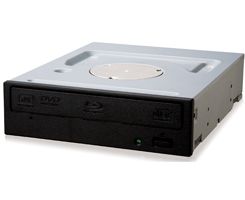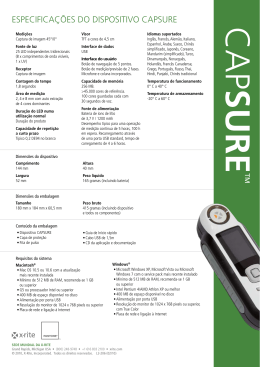
Pioneer Bdr 208dbk Drivers For Mac
Last drivers. Ioxperts webcam driver; 4q001429 compaq driver; pioneer bdr 208dbk driver for mac; commview for wifi ppc driver download; nec dvd rw nd-2500a driver; dell optiplex gx620 vista audio driver; conexant softv92 speakerphone softring modem with smartcp drivers; dell xps one a2420 driver for mac download; canon n670u windows 8 driver.
Blu-Ray drive not fully functioning = 1-yr-old Pioneer model BDR-209UBK (also known as BDR-209M). It seems a communication problem, so I suspect a drivers problem.I am trying to force a driver update, but its' not taking. Have tried:1. Letting Device Manager look for updates. No help; sees current driver as most up-to-date (dated 6-21-2006 - ten years old!).2. Uninstalling drivers (via Device Manager), then having DM find the right drivers.
No help; it gets the same ancient drivers that don't work.3. Uninstalling the drivers via DM, then rebooting to trigger W10 boot sequence's automated retrieval of missing drivers. No help; same result.Is there some other way to get the most up-to-date drivers? Pioneer's website gives only firmware updates, no drivers. I thought firmware resided solely on the device, whereas drivers reside in your PC (and tell your OS how to communicate with the device). If so, then why doesn't Pioneer offer drivers for their drives?
This implies that drivers now managed solely by the OS (not by the PC owner). But if so, then how can we overcome errors when the OS does not get drivers that work???Detailed Problem HistoryDrive Malfunction Details-Drive will not burn discs, and only reads commercially burned discs (not discs I burned myself).
New thought:This BR drive is on one of two 'GSATA ports' of a gigabyte mobo (GA-EX58-UD4P). In CMOS, there is a mode setting for the 'Gigabyte SATA2 chip' that runs those two SATA ports. Before my PC rebuild, I had that set on RAID/IDE, which - for non RAID devices like this - of course means IDE mode.But during my PC rebuild, I changed that to AHCI mode (since I had no plans of doing RAID on those two ports).
And perhaps the BR drive does not work well with AHCI mode? I thought IDE was only necessary for really old hardware, and this BR drive was built in 2015. But maybe I'm missing some understanding, and IDE is still much safer for optical drives?(There is a 3TB HDD on the other SATA port that this controller runs.
So I thought I would get better data transfer speeds in AHCI mode. But if that means a non-functioning optical drive, then it isn't worth it.)I will try reverting the port's SATA mode to IDE and post results. ResultsNo help.With either of the two alternate mode settings (IDE or RAID/IDE), the two storage devices connected to these two SATA ports disappear from 'This PC.' Details-At reboot, enter CMOS Set-up Integrated Peripherals Onbroad SATA/IDE Ctrl Mode = (1) IDE, (2) AHCI, (3) RAID/IDE. On choosing either IDE or RAID/IDE, and rebooting, 'This PC' does not show either the HDD or BR drive in its list of drives connected.
Reverting to AHCI mode restores visibility of both HDD & optical drive (but optical still has broken functionality as described initially). UpdateI tried moving the BR optical drive to different SATA port, and it works fully now. I can't spare that borrowed port for this purpose in the long-term, but I think this points to the solution.The mobo's provided set-up utility offers SATA drivers. I had not installed them, because they would be circa 2009, as compared to the 2015 drivers which Windows 10 Device Manager shows my current SATA drivers have.But in retrospect, I now believe those Gigabyte-provided drivers may be ONLY for their 'extra' two SATA ports, which they call GSATA, and which they say are controlled by a separate chip set. In the prior build of my PC (way back in 2009), I HAD installed those drivers, so they were in place until my rebuild this summer (2016), which explains why the BRD had worked fine until the rebuild.I will install those GSATA chip set drivers now, and then post a final resolution, just to confirm this is closed. Emerald, thanks for the suggestion.
I tried it, unfortunately without success.We tried the JMicron link, installing both in default mode, and in compatibility mode (for W7 & W8), with no luck. The installer opens and begins copying files, but then aborts with the error message that the device was not found. I notice the path name in your URL mentions a card reader.

Is this by any chance not the address you intended? Or is it the right drivers with a red-herring path name?We also tried manually applying the drivers found in the JMicron extracted-to folder, by running hdwwiz.exe. But this found no W10 usable drivers in the jmcrjm.inf file. (We set the look up as 'show all drivers' and manually browsed to the folder location, selecting the jmcrjm.inf file, but that did not list anything in the returned-to 'Add Hardware' window.). Sata drivers and AHCI mode are usually for sata hdds not dvd or cd's.If something like daemontools (or some kind of disk emulation program) is installed this can screw things up like dvd'sBecause it installs its own driver, and adds it to the registry, and the system will use this driver instead of the default driver the dvd uses. Result dead dvd. It wont read anything or burn anything.Go to the burners entry in device manager, go to the details tab.
Change it to hardware ids. Look for any upper / lower class entries. Tell us whats there.Manufacturer's dont usually have drivers for dvd etc, unless it's pretty old. Only firmwareThe same thing can happen if you use something like an Acronis backup program, USB ports can fail to get recognised. Because it'll do the same thing add its driver in place of the default driver. Result: Dead USB port.You have to go into the registry and look for the driver entry it added, then delete it. This usually fixes the prob.
UpdateMy problem has morphed. By installing the GSATA driver from Gigabyte's 2009 CD that came with the mobo, I now have more functionality back from the optical drive. For example, it can read data discs previously burned, and W10 can burn DVDs from iso on my hard drive.
But it's otherwise quite buggy. Vineyard dvr hdd pc viewer free software and shareware. File Explorer is having trouble consistently seeing filenames and metadata (for the files on the optical drive), and tends to spontaneously close (just for the optical disc) after almost every file transfer operation completes (i.e., 90+% of the time).These new problems only happen with the optical drive connected to a Gigabyte GSATA port. They do not occur when the optical drive is connected to any of the mobo's 6 main SATA ports. UpdateI gave up on trying to make the 'GSATA' ports work again, and bought a new PCIe SATA card instead.(To use it, I'll either sacrifice a low-use expansion card, or maybe jimmy this into the tight fit of my unused PCIex1 slot, by moving a CPU fan around one of Noctua's massive assemblies).The fringe benefit of this decision, is that this new card gives me SATA III (6 Gb/s), vs. The SATA II (3Gb/s) on my mobo's ports. So I can move my SSD RAID onto it, thereby doubling it's read speeds. This involves giving up the hardware-like RAID of the mobo's ICH10R.
If you force a plane into a nose dive at the speed of sound, the wings will shear off, you try to use the rudder at top speed, it will fail. The app is 100 percent (100%) safe to download and Install. Extreme landings download. I enjoy this simulator of flight, however its not very realistic in terms of how the planes fly. Our download links are from safe sources and are frequently virus scanned to protect you.
But the BYO tech at Microcenter says he's getting near 1 Gb/s reads from a dual SSD RAID0 in software RAID0 on SATA III. He explained that the performance disadvantages of software RAID apply far less when using SSDs. That was news to me; but very good news. I'm currently getting just over 500 Mb/s reads from the two RAIDed SSDs (Samsung Evo 850s) in mobo RAID, so the proposed move would double my speeds for loading large software and the videos I edit.I was also advised that software RAID has another big advantage: If some part of my system dies, I would need any repair of it to restore the exact controller, for my current RAID array to be readable.
But in software RAID, Windows will just see the SSDs as having been previously logically paired, and then asks if I want to relink them. And voila, I'm back in business.
That's much easier / more reliable.I'm vaguely frustrated to have not figured out the underlying problem in my initial post, but sometimes you have to give up a battle to win the war. You tried a ton of things, except the simplest. Test the drive in another computer, and try another drive in yours.
See if it's a hardware issue with the drive or not.hang-the-9: Thanks for your suggestion. I did a version of that: (as mentioned) I tested the drive on another SATA port of the same PC, and it worked fine.
So the problem is somehow in using the GSATA ports of the Gigabyte mobo, and not in the optical drive itself.I've since embraced the work-around of adding a SATA III PCIe card. I've confirmed that this optical drive works correctly on the new SATA card's ports too - just as it does on the non-GSATA ports on the same mobo.